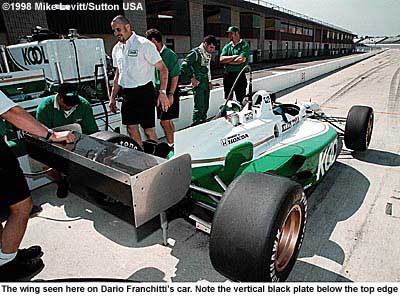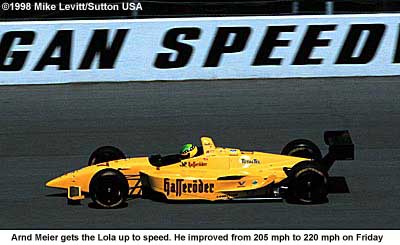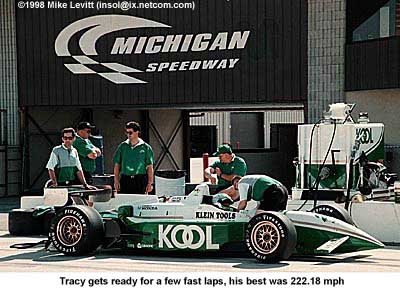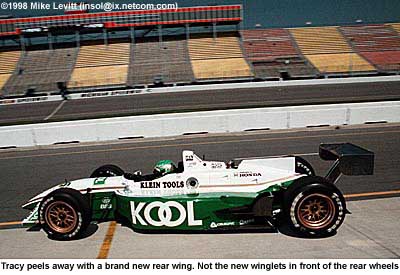©1998 SpeedCenter Internet Publishing, Inc.
Photos by Mike Levitt / Sutton USA
The new Handford Device,adopted by CART to help reduce the speeds of its ChampCars at superspeedway events, received its most extensivetest to date last week at Michigan Speedway.
 |
Designed by Mark Handford of Swift Engineering, the deviceis a wing-like aerodynamic piece fitted to the rear of the carwhich creates drag and reduces downforce. Drivers whotested the piece at Michigan last weekend included MichaelAndretti (Kmart/Texaco/Havoline Swift Ford), Al Unser Jr.(Marlboro Penske Mercedes), Paul Tracy (KOOL ReynardHonda), Gil de Ferran (Valvoline/Cummins Special ReynardHonda), Dario Franchitti (KOOL Reynard Honda), AndreRibeiro (Marlboro Penske Mercedes) and Arnd Meier(Hasseröder/J.A.G. Lola Ford).
 |
 |
 |
"It still leaves the driver in the car, and it slows us down, so theHandford wing was a great move by CART."
"I think you had to do something to slow the cars down,"Franchitti said. "To be running 240 [miles per hour, MauricioGugelmin's pole winning speed at California Speedway lastyear] is fine until you hit something. Something had to be donewith the speed. Time will tell how they go in traffic and howwell we can race with them [the devices]. All in all, somethinghad to be done, and this seems a good solution."
"If you compare how much quicker we'd have been going hadwe never done anything [to reduce speeds] to where we areright now, we've probably taken a huge chunk of speed out,"said Derrick Walker, owner of the car de Ferran campaigns inthe FedEx Championship Series. "The real problem is notactually going fast. Our drivers can drive these cars at thosespeeds. The problem is if something goes wrong and you hitthe wall. For every mile-an-hour more in speed, the impact isfour times harder, and there's only so much you can do insidethese cars to protect the drivers. So we've always had a needto contain speeds, and this [the Handford Device] is aresponse to that."
Source: CART News Service